If the furniture isn’t arranged right, even the most beautiful of rooms can fall
short. So how do you create a successful layout? For starters, avoid these
mistakes. But if you’re guilty (we’ve all been there!), fear not—it’s easy to rectify problems with
these tricks.
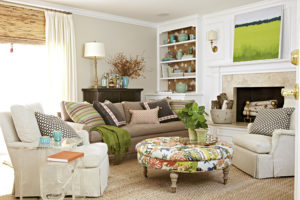
Mistake:
Wallflower furniture.
Your room may feel bigger with all the furniture pushed up
against the wall, but if you find yourself having to shout across the room to
have a conversation, it may be time to rearrange. In this living room, the sofa
“floats” in the middle of the room, but
it’s
closer to the fireplace and the chairs, which creates a cozier conversation
area.
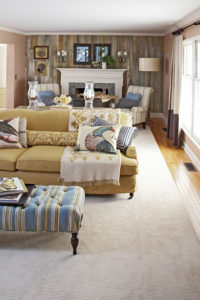
Mistake:
Foregoing zoning.
In large, open rooms, bring order by establishing zones for
different activities: a seating arrangement for conversations and TV-watching,
and a work area with a desk or table for homework, paperwork and art projects, for example.
Set up your space according to your needs, rather than the labels a builder may
have assigned.
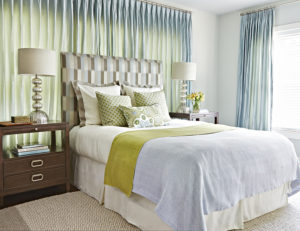
Mistake:
Beds that partially block a window.
A bed that peeks over a window frame looks odd from the
street and can lead to uneven fading. However, what if it’s the only place for your bed?
Make it look better with these tricks: hang floor-length curtain panels that
fall behind the headboard and block the back of the headboard from the window,
or install top-down, bottom-up shades, which will allow light to come in but be
a backdrop for the protruding headboard edges. If your style is modern, go with
a platform bed with a headboard that’s low enough to fit beneath the window trim. You can also
install an entire wall of curtains as a fabric backdrop.
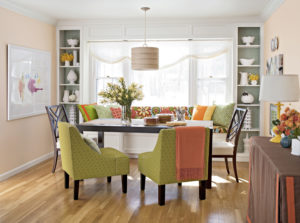
Mistake:
Sticking to conventions.
Yes, conventions are good to stick by much of the time, but
occasionally a shake-up is in order. Here, the oblong dining table sat square in the middle of
this room, leaving space for little else. But flipping it sideways and scooting
it to the end of the room left space to incorporate a buffet and secretary (not
shown).

Mistake:
Forgetting creature comforts.
Think about what you’ll be doing as you use the furniture. Having coffee tables and side tables within
reach of all seats for drinks puts convenience at the forefront.
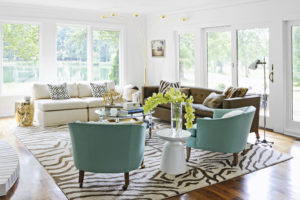
Mistake:
Off-balance rooms.
Shoving the furniture to one side of a room is like a
seesaw with only one person. But achieving balance doesn’t mean you have to go completely
symmetrical. A love seat on one end of an arrangement can be balanced by two
chairs on the other end, for example.

Mistake:
Ignoring traffic flow.
In addition to thinking about how furniture pieces relate
to one another and the room, you’ll want to think about the traffic flow: how people enter,
exit and navigate the room. For living rooms, make sure
people can easily get in and out of the seating grouping without having to awkwardly
tango around a side table, for example. If your room has several entries and
exits, plan a clear path between these points, such as between an archway that
leads from the kitchen to the living room and patio doors.
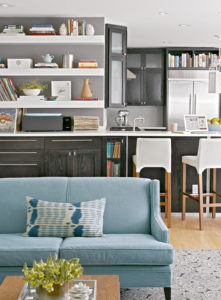
Mistake:
Eschewing smaller furniture.
Furniture doesn’t have to be oversize to serve a purpose. Large pieces can
quickly overtake a space, so don’t ignore smaller settees, slimmer console tables and petite end tables as contenders for your
rooms. A bulky sofa can often go only one place in a room, but a smaller
version can be flexible enough to fit multiple places.
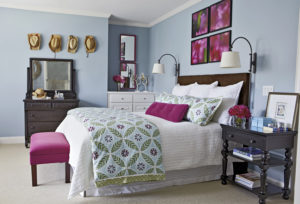
Mistake:
Forgetting to get situational.
Yes, you may be able to walk between the dresser and the
bed, but what happens when you open the drawer to get your clothes out in the
morning? Or if you need to open a buffet drawer when guests are gathered around
your table? Try to arrange furniture so that you can comfortably open drawers
and doors without having to step aside.
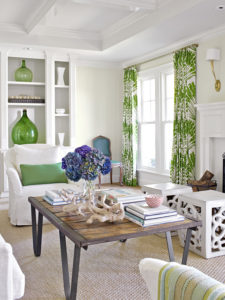
Mistake:
Thinking single-function.
When arranging and selecting furniture, consider all the
activities your living room will see, and plan accordingly. A pair of stools, for
example, can be used as seating when you’re hosting a large group of people, but they can also be
moved around the conversation area to be used as end tables during a cocktail party.
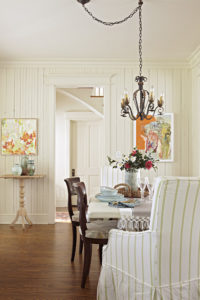
Mistake:
Off-center light fixtures.
Do your dining room a favor: hire a drywall professional to remedy this problem and
relocate your dining room light fixture over the table. For a quicker fix, you
can swag a fixture that has a chain.
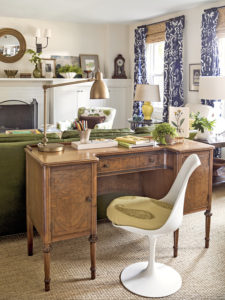
Mistake:
The bowling-alley effect.
Long, narrow rooms are the bane of furniture arranging. But
there is a way to play up this awkward space to your advantage: Divide the room
into zones. Arrange the conversation area in one zone, and place a desk along
the back of the sofa to create a work zone, or place a small table and chairs
in the area behind the sofa for doing homework or playing games. You can also
place two small chairs and a side table along the back of the sofa for a
smaller secondary seating area.
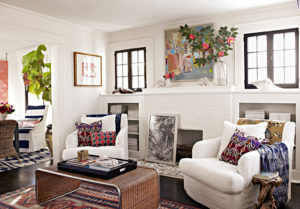
Mistake:
Bad backs on display.
Nothing makes a room fall flat like a bad first impression.
So if the first thing you see when you walk into a room is the ugly or plain
back on a piece of furniture, rethink your arrangement. Tuck a chair with a
pretty front but a bad back into a corner. Or give reupholstering a go and
cover the back in an eye-catching patterned fabric.

Mistake:
Poor rug relationships.
Ideally, all legs of your furniture should be on the area rug. If that isn’t possible, aim to have the
front legs of the furniture placed on the rug.


